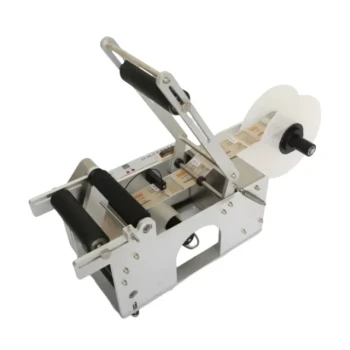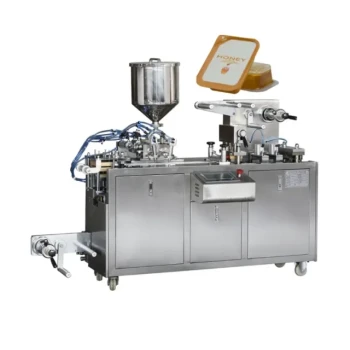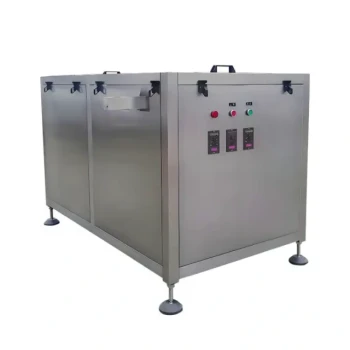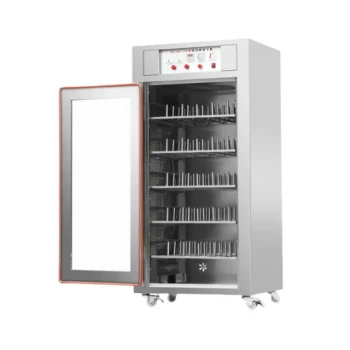The most reliable method for melting beeswax is to use a double boiler. This technique provides gentle, indirect heat that melts the wax evenly and safely, giving you maximum control while preserving the wax's natural color, aroma, and beneficial properties.
The core principle of melting beeswax is not about speed, but about control. Using indirect, low-temperature heat is non-negotiable to prevent scorching, preserve the wax's quality, and, most importantly, avoid a significant fire hazard.

Why Indirect Heat is Essential
Understanding the "why" behind the method is crucial for success and safety. Beeswax is a natural material with a low melting point, but it is also flammable.
The Risk of Fire
Beeswax is flammable and has a flashpoint of around 400°F (204°C). Placing a pot of wax directly on a stove burner or over an open flame creates hot spots that can easily exceed this temperature, causing the wax to ignite.
Indirect heat methods, like a double boiler, use water as a buffer. Since water boils at 212°F (100°C), it creates a stable temperature environment that cannot reach the wax's flashpoint.
Preserving Wax Quality
Aggressive, direct heat can damage the beeswax. Overheating, even well below the flashpoint, can scorch the wax, causing it to darken and lose its delicate honey-like aroma.
To retain the wax’s natural antimicrobial properties and light color, it should not be heated above 170-175°F (77-79°C).
Safe and Effective Melting Methods
The best methods all rely on the principle of indirect heat. The double boiler is the most common and versatile for craft purposes.
The Double Boiler Method (Most Recommended)
This is the gold standard for melting beeswax for candles, balms, and other projects requiring clean, high-quality liquid wax.
To create a double boiler, place a large pot filled with a few inches of water on the stove. Set a smaller, heat-proof pot or metal bowl inside the larger one, ensuring its bottom does not touch the bottom of the outer pot. The water should be simmering, not rapidly boiling.
Place your beeswax into the inner pot. The steam from the simmering water will gently and evenly melt the wax in 30-60 minutes, depending on the volume.
The Crock-Pot Method
A crock-pot or slow cooker is another excellent indirect heat method, especially for larger batches of wax.
Simply place your beeswax into the ceramic insert of the crock-pot and set it to the "low" or "warm" setting. This method is very slow and gentle but requires minimal supervision once started.
This is a great option if you need to melt a large volume of wax and keep it molten for an extended period.
Understanding the Trade-offs and Safety Precautions
Even with safe methods, awareness is key. Melting wax should never be a rushed process.
The Dangers of Direct Heat Methods
Some sources may mention placing a pan in an oven or directly on a stove with water. These methods are far less controlled than a true double boiler.
An oven's thermostat can fluctuate, and putting a pot directly on a burner creates an unnecessary risk of the water boiling away unnoticed, leading to direct heat exposure and potential fire.
Essential Safety Practices
Always treat molten wax with the same respect as hot oil.
Never leave melting wax unattended. The process can take time, but your presence is the most important safety feature.
Use dedicated equipment. Beeswax is notoriously difficult to clean from pots and utensils, so it's wise to have a dedicated set for your wax-related projects.
Protect your surfaces and yourself. Molten wax can cause severe burns. Always pour carefully and wear appropriate protection if needed.
Making the Right Choice for Your Project
Your goal determines the best tool for the job.
- If your primary focus is small-batch crafts like candles or lip balms: The double boiler method offers the best combination of speed, control, and safety for achieving high-quality results.
- If your primary focus is melting a large volume of wax or keeping it liquid for hours: The crock-pot method is a superior "set it and forget it" option that ensures low, stable heat.
- If your primary focus is processing raw, unfiltered wax from a hive: A solar melter (a dark, insulated box with a glass top) is a sustainable and gentle, albeit slow, option for separating wax from debris.
Ultimately, successfully melting beeswax comes down to prioritizing safety and control over speed.
Summary Table:
| Method | Best For | Key Benefit |
|---|---|---|
| Double Boiler | Small-batch crafts (candles, balms) | Maximum control & speed |
| Crock-Pot | Large batches, extended melting | Gentle, low-maintenance heat |
| Solar Melter | Processing raw wax from hives | Sustainable & debris-free |
Need reliable equipment for large-scale beeswax processing?
As a trusted wholesale supplier to commercial apiaries and distributors, HONESTBEE provides the durable, high-capacity melting equipment you need for safe and efficient operations. Our products are designed to help you maintain the highest quality standards while maximizing productivity.
Contact our experts today to discuss your specific needs and discover how we can support your business growth.
Visual Guide

Related Products
- Professional Thermostatic Conical Honey Melter
- Honey Concentrating Vacuum Heating Thickening Machine Dehumidifier for Honey
- High Quality Honey Dehumidifier Dryer Thickening Machine for Beekeeping
- Beehive Handle and Frame Rest Cutting Machine: Your Specialized Hive Machine
- HONESTBEE Advanced Ergonomic Stainless Steel Hive Tool for Beekeeping
People Also Ask
- Is it safe to heat crystallized honey? Restore Your Honey's Liquid State Safely
- Why is heating honey sometimes necessary? The Essential Guide to Processing & Quality
- What is the effect of heating on honey? Preserve Quality with Controlled Warming
- What are the negative effects of overheating honey? Preserve Your Honey's Natural Quality
- Why is it important to heat honey slowly and evenly? Preserve Flavor, Nutrients & Value



















